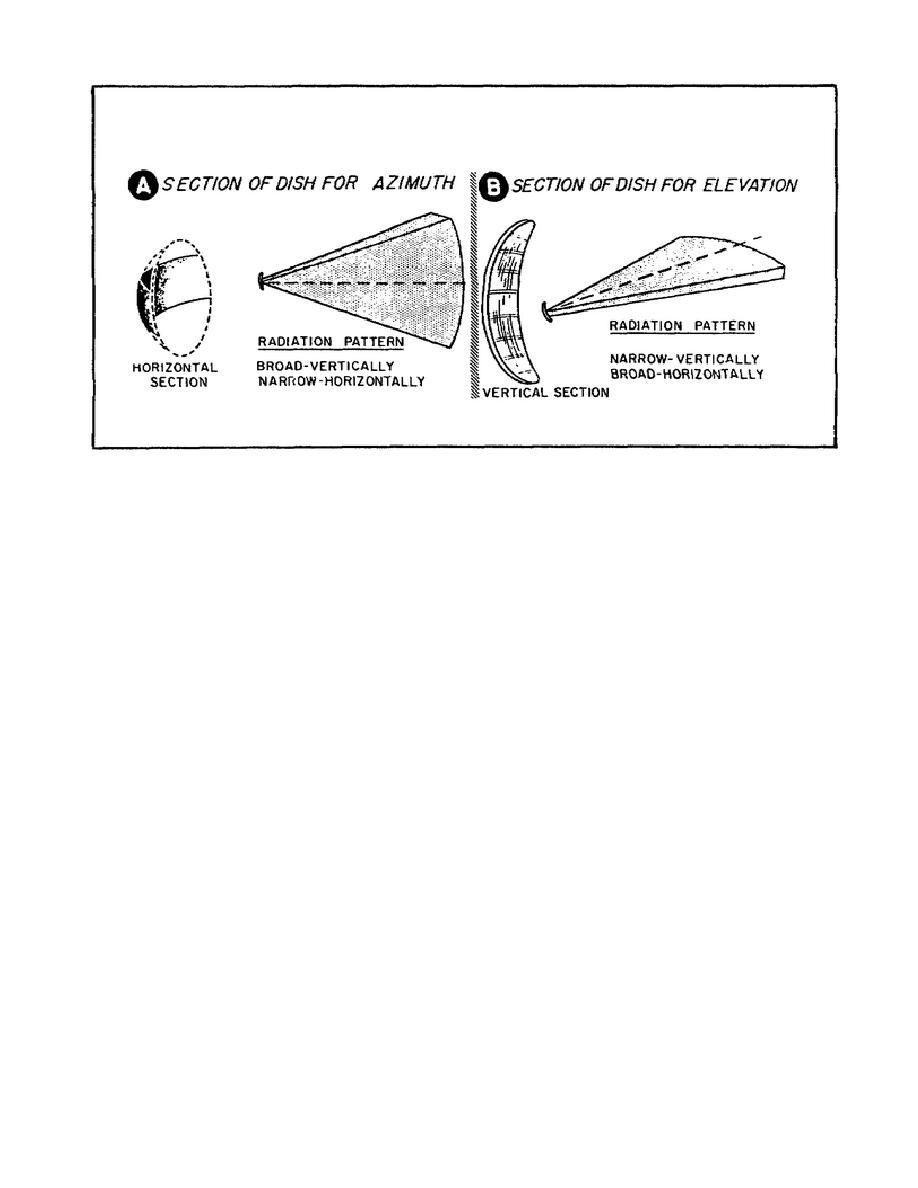
Figure 145.
How a Section of a Dish Works.
b. Now, if you turn the reflector around 90 degrees as shown in Part B
of Figure 145, the beam also turns 90 degrees. This means the beam is sharp
vertically, but broad horizontally.
This type of reflector is used with
height-finding radar sets for two reasons:
(1) The
narrow
vertical
beamwidth
gives
accurate
elevation
information.
(2) The broad horizontal beamwidth allows the set to cover a fairly
wide area without rotating.
c. You have seen how we get different beam patterns by using reflectors
of various shapes. Now, let's find out about some of the specific antennas.
24. Radar set AN/MPQ-10 uses a dish reflector.
a. Figure 146 shows the AN/MPQ-10 radar antenna and its radiation
pattern.
The MPQ-10 radar set locates and tracks mortar and artillery
shells. Therefore, it uses a dish reflector to produce a narrow cone-shaped
beam. Notice that both the horizontal and vertical beamwidths are the same,
5 degrees.
202



 Previous Page
Previous Page
